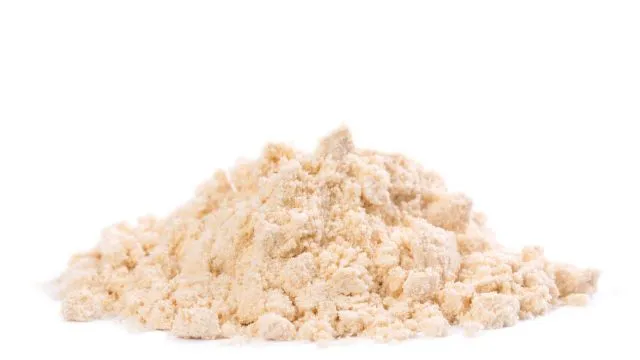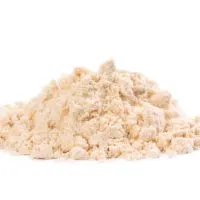
- Share on Facebook95
- Share on Pinterest
- Share on Twitter
Coconut flour has a plethora of benefits, but there can be some challenges when using it your recipes – especially when you’re just starting out. However, despite these challenges, many cooks are now opting to bake with it, because it is grain free and it continues to rise.
Coconut flour is the meat of the coconut, dried at a low temperature and ground to a fine powder, which is then used for baking.
The benefits of using coconut flour include the following:
- Coconut flour is rich in protein, fiber and fat, which make it extremely filling.
- Coconut flour is an exceptionally good source of manganese, which helps you to better utilize many nutrients including choline and biotin (found in eggs), vitamin C, and thiamin. Manganese also supports bone health, nervous system function, thyroid health and helps to control your ideal blood sugar levels.
- Coconut flour is not grain-based, and as such does not present many of the issues that accompany grains. Coconut flour is gluten-free and, while it does contain food phytate, the mineral-binding effects of phytates in coconut are nonexistent, so coconut flour does not need to be soaked.
- Coconut flour is a good source of lauric acid, a saturated fat linked to supporting the immune system and the thyroid. Like most healthy fats, lauric acid also promotes good skin health.
- Coconut flour is a gluten-free/grain-free flour, and has lots of fiber, protein and iron (coconut flour has 60% fiber; 56% of which is insoluble fiber; and 40% protein).
Baking with coconut flour:
 Coconut flour and other flours are not equivalent. You cannot substitute coconut flour for any other flour. Coconut flour is very absorbent. You will want to substitute ¼ cup of coconut for 1 cup of grain-based flour.
Coconut flour and other flours are not equivalent. You cannot substitute coconut flour for any other flour. Coconut flour is very absorbent. You will want to substitute ¼ cup of coconut for 1 cup of grain-based flour.
Coconut flour is dry. Because coconut flour is absorbs so much moisture, you will need to increase your eggs or add some yogurt or coconut milk to moisten the mixture. For every 1 cup of coconut flour, 6 eggs or their equivalent will need to be added to the recipe.
Coconut flour is lumpy. It’s best to keep your coconut flour in the fridge and when using it for your recipe, sieve it or use a fork to get the lumps out. Be sure that the batter is thoroughly mixed.
It may take some practice to get your recipe just right using coconut flour. Expect to do some experimenting and tweaking. Once you get the amount just right be sure to write down your changes. That way, you’ll get it perfect every time.
It’s not only coconut flour that has healing benefits but also coconut oil. With hundreds of uses, coconut oil is fast becoming the go-to oil for nutrition and health.
-The Alternative Daily
- Share on Facebook95
- Share on Pinterest
- Share on Twitter

